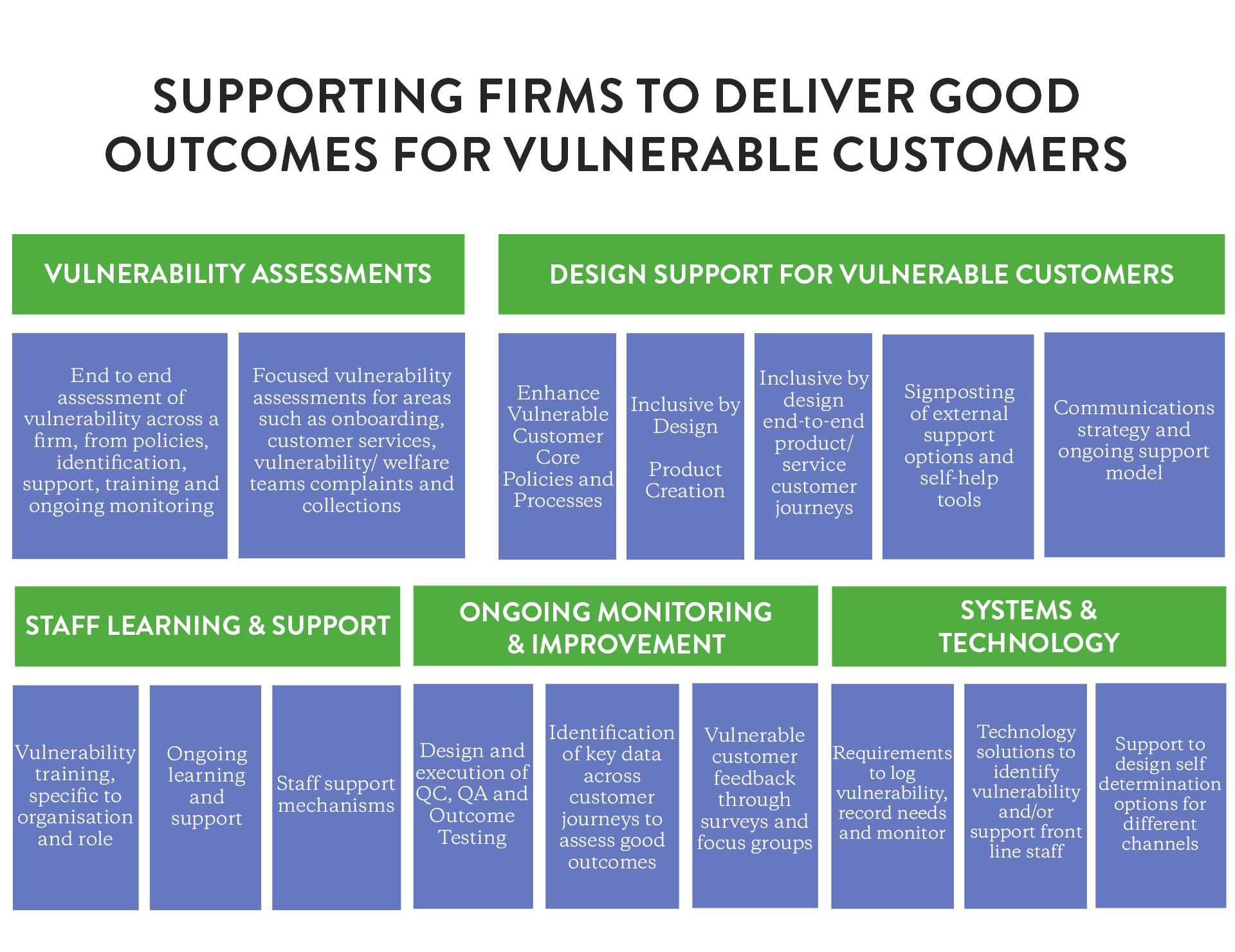Share
Vulnerable customers have always been thought of as a small sub-section of the wider population. The FCA’s Financial Lives survey in 2022 showed that 47% of UK adults had 1 or more vulnerability characteristic. This is not a small sub-section of the population. For most main stream financial services firms this is nearly half the customer base, or in a different context, 47 calls out of every 100 are your customer service teams receive are likely to be from vulnerable customers.
Vulnerability characteristics can be driven by health, live events, resilience and capability. Some customers with these characteristics will not want or need any additional support. Others will need enhanced levels of information and/or support to be able to successfully engage and undertake the same activities non-vulnerable customers do. It is critical that firms think about all their customer journeys through a vulnerable customer lens, not just focusing the services provided by specialist vulnerability or welfare support teams.
It is valuable to:
- identify the policies and procedures that are available to support vulnerable customers;
review the design of the journey and modify if necessary to make it more inclusive; - identify any limitations of support that can be offered and what the process is in those exceptional circumstances to engage with the customer;
- identify data points that can be monitored to assess whether vulnerable customers are achieving the same good outcomes as non-vulnerable customers;
- Ensure outcomes testing identifies and assesses whether vulnerable customers are receiving good outcomes on an individual basis. This will also identify any opportunities for further enhancements.
Customer facing staff are absolutely pivotal to delivering good outcomes for vulnerable customers. They are at the heart of customers’ engagement with your organisation. They have the ability to spot vulnerable characteristics, log ongoing support or communication requirements, and provided tailored adjustments, referrals or signposting at a critical point for customers. This means investing in high quality training that is tailored to your organisation and the support that is on offer for your customers is crucial to delivering good outcomes.
However training staff on how to engage and support vulnerable customers is a not a once and done activity, it requires ongoing embedding activity to ensure staff can recognise and help customers with a wide range of different vulnerability characteristics. Staff need to feel empowered and supported to do the right thing for vulnerable customers. A key part of that picture is thinking through how you support staff to have challenging and emotional conversations with customers. Technology is one way of providing additional support for customer facing staff, the use of text and call analytics can support staff to identify vulnerability and provide real-time access to information during those interactions.
If there is one thing that is clear, delivering good outcomes for vulnerable customers is not simple and requires consideration across multiple areas.
The diagram below sets out the support that Huntswood can offer firms to identify, support and monitor the outcomes they are achieving for vulnerable customers.

Author

Emma Mitchell
Director of Advisory Services

